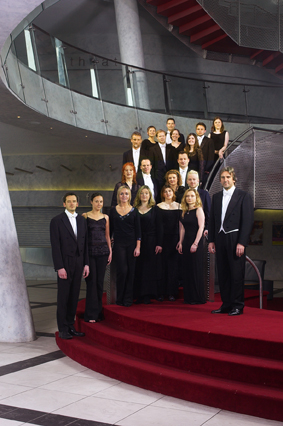Camerata Ireland in Review
Camerata Ireland in Review Barry Douglas, music director and piano Celine Byrne, soprano Zankel Hall at Carnegie Hall, New York, NY March 5, 2011Every now and then, amid the hectic New York concert season, there is an evening that reminds me how much I love my reviewing job; the chamber orchestra Camerata Ireland, on a US tour through March, provided just such an occasion last weekend in a perfectly magical concert that coupled Irish music with works by Mozart (a surprisingly winning combination). At the center of it all was pianist, arranger, and conductor, Barry Douglas, a musical titan whose energy is transmitted in life-affirming performances.
In a rather unassuming opening, Mr. Douglas and the orchestra played his own arrangements of two Nocturnes of John Field (1782-1837), Nos. 1 and 5, originally for solo piano. The orchestrations were tasteful and spare. Though my preference is still for the more intimate originals, it was a natural to give the orchestra some music of Field, as he was one of the first important composers from Ireland, welcomed in Russia for decades with perhaps the same fervor as was Barry Douglas himself as victor in the 1986 Tchaikovsky Competition in Moscow. It would be interesting to hear Mr. Douglas with the Camerata Ireland in one of Field’s Piano Concerti (or even just a movement, say, the Larghetto of the Sixth Concerto).
Rising star Celine Byrne joined the orchestra to sing “Porgi Amor” from Mozart’s “Le Nozze di Figaro.” Composed when John Field would have been around four years old, it enjoyed a fresh hearing from this listener, because of both the fascinating program sequence and Ms. Byrne’s excellent performance. Her full, pure sound and lovely presence will make her one to follow.
Mr. Douglas moved from the role of operatic conductor to that of piano soloist (conducting from the bench) in Mozart’s Piano Concerto in A Major, K. 488 (also composed in 1786). One of the best pianists I’ve seen in this dual role, Douglas drew perfect responsiveness from his orchestra. One marveled in the first movement at how clearly he projected his conception physically and musically so that there were no seams in the ensemble; one marveled perhaps more, though, at how he could create (while multi-tasking) a realm of utter introspection in the breathtaking Adagio. The final movement had just the right edge-of-the seat energy to leave the audience clamoring for more.
After intermission came two traditional Irish folk songs (again arranged by Mr. Douglas), “I Wish I Was in Carrickfergus” and “Last Rose of Summer” sung by soprano Celine Byrne (who had changed from a black dress into a brilliant emerald green). These were skillfully arranged and expressively sung, but the best Douglas arrangements of the evening were “Druid Dances” by Edward Bunting (1773-1843). Perhaps not having to incorporate piano filigree or to accommodate a vocal part was liberating, but whatever the case, Douglas arranged this set with unfettered orchestral imagination, alternating sentimental song with freewheeling fun.
Returning to Mozart (who shared a good 18 years on this earth with Bunting) the orchestra then gave a knockout performance of the Symphony No. 40 in G Minor to close the evening. Starting the work more briskly than one usually hears it (with Douglas barely arriving onstage before the opening upbeat), they gave a performance that was nonetheless well articulated, cohesive, and commanding all the way through to the exciting end. Audience members jumped to their feet in passionate ovation. Some of this reaction may have been to the conductor’s “rock star” charisma, and some of it may have been gratitude for a great performance, but either way, everyone won.
Douglas and the orchestra gave an encore of Phil Coulter’s touching “Home Away from Home,” which I heard last when I reviewed them in March, 2008 (NY Concert Review Volume 15, No. 2). This time was even more beautiful. Can they possibly outdo themselves next time? I for one won’t miss finding out.

